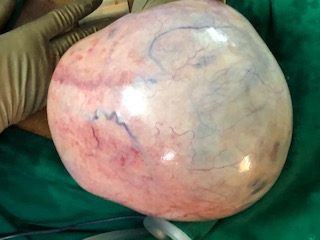We must explain to you how all seds this mistakens idea off denouncing pleasures and praising pain was born and I will give you a completed accounts of the system and expound.
123/A, Miranda City Likaoli Prikano, Dope United States
+0989 7876 9865 9
Ovarian cysts are sacs filled with semi-solid material or fluid that develop on or inside the ovaries. Ovaries are small organs in the female reproductive system whose function is to make female hormones and hold egg cells.
The body may develop different types of cysts, out of which some are normal and harmless, called functional cysts, while others could be disease-related cysts. The functional cysts may develop every month due to ovulation and shrink with time without any specific treatment. They are harmless and do not cause any issues. On the other hand, the disease-related cysts could show symptoms.
Symptoms of an ovarian cyst
If the ovarian cyst is small, it may show very mild symptoms or no symptoms at all. However, women with larger cysts may experience the following symptoms:
If the woman develops a high fever with sharp pelvic pain and dizziness, it could be a sign of a ruptured cyst or an ovarian torsion. In such cases, immediate treatment is required to prevent serious consequences.
- Intake of hormonal supplements or fertility drugs to encourage ovulation increases ovarian activity. It may cause hormonal imbalance, causing ovarian cysts.
- Cysts develop in the ovary in the early stages of pregnancy to support the growing fetus until the placenta has formed. While in most cases, such cysts resolve on their own, in some, they remain.
- Pelvic inflammatory diseases or any infection in the pelvic region can promote the growth of ovarian cysts. It happens as a result of infection spreading across the ovaries.
- Tissues that develop outside the uterus do not get the way to exit the body during menstrual periods, resulting in cysts. Such cysts may impair fertility and cause severe pain in the pelvic region.
- If you previously had an ovarian cyst, you are more likely to develop another.
- The doctor performs a pelvic examination to check the vagina, cervix and uterus for the presence of any lumps. An ultrasound scan is also prescribed to detect cysts on the ovaries. The doctor may also run a few blood tests to measure the level of certain hormones in the body. Lastly, a laparoscopic study will confirm the presence of ovarian cysts.
- Functional cysts are harmless and go away without any treatment. The doctor may prescribe medications to stop ovulation and prevent further cyst formation. If the cysts are larger and causing symptoms, laparoscopy surgery is performed.
In laparoscopy, the doctor makes a small incision in the abdomen and subsequently inserts a small device called a laparoscope with a small camera. The doctor views the reproductive organs and pelvic cavity with this device and removes the cysts surgically.
Visit Pragati IVF Center to know more about Ovarian Cysts and treatment options to prevent serious consequences.
